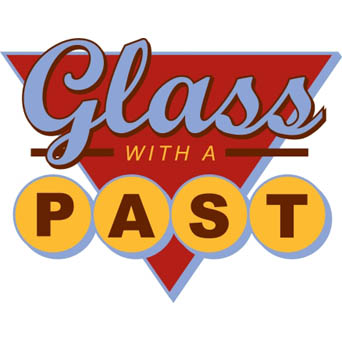Q: I am wondering if you have a tutorial (I have looked and haven’t found on your site) to cut a wine bottle lengthwise? I thought I had seen one on your site but that was some time ago. If not can you give me any tips?
A: Hi there; There is a video hidden in the bottle planter tutorial (I have got to make them easier to search, I couldn’t find it at first either): https://glasswithapast.com/knowledgebase/square-recycled-bottle-planter/
The best way is to use a tile saw, it’s really difficult to get the thick bottom to break evenly with the thermal shock method.
Hope that helps! Stay safe,
Jodi
Q: Hi, I’m trying to do some glass casting with a range of recycled glass including bottles, jars, float glass, pyrex, old (broken) vases, etc.
Do you have any tips on how to work out the annealing temperature and COE? do you just guess based on the glass type, and then do some experiments, or is there a better way?
At this stage I’m just wanting to cast a single type of glass in one mould but want to make sure it flows and anneals properly. I would love to combine in the future. Have you had much success with casting different glass together and/or using oxides to colour it?
A: Hi there;
there aren’t that many different types of glass really, for bottles and windows the COE is nominally 82+/- 3, and the annealing temperature is about 1060. I’m very cautious and give it looooooooots of time to anneal. Vases typically are closer to art glass, although each maker will have a slightly different COE based on their manufacturing recipe. Those I anneal at about 960, and again give them lots of time. Lead glass is nice to cast with, the melting temperature is quite a bit lower due to the lead, and the annealing temperature is about 900.
You can mix the glass, but you have to grind it down to very small particles first, I’ve done a lot of that, here’s an article about it, that may help: https://glasswithapast.com/knowledgebase/cast-bottle-glass-frit-panels/
I haven’t used oxides yet, just because I keep forgetting where I put them. 
Please let me know how the casting is going, and if I can help with anything else.
Good luck and stay safe!
Jodi
Q: Hi Jodi, I Bought the course ‘Fused recycled glass flowers’ from Curious Mondo. Could you suggest how I can cut the bottles along the length. I do not have a tile cutter.
Thanks.
A: Hi Lakshmi; I would cut the top and bottom off using the thermal shock method, and then cut down the sides to make 2 flat pieces of glass. This tutorial is for making drinking glasses, but it shows how to cut bottles without a tile saw: https://glasswithapast.com/knowledgebase/recycled-wine-bottle-drinking-glasses-tutorial-basic/
so that may help visualize what I’m talking about. Please let me know if I can help with anything else,
stay safe,
Jodi
Q: So I made a “Chewey” and I have a question for you. can I use the ground up frit powder to create a new piece of glass? and if so how do I do this. like use a drop glass firing order or something?
A: Hi there;
You can use the frit to make a new piece of glass, but it is probably not going to be quite what you are thinking. Here is a link to an article where I show the process, and the end result. The finished pieces don’t look like sheet glass, they are more like pate de verre.
https://glasswithapast.com/knowledgebase/cast-bottle-glass-frit-panels/
Q: I have a customer who wants a swarvoski crystal wine glass that he wants me to fire flat. Since crystal has lead, is this possible? If so what firing schedule would work?
A: Hi there; I’m very behind on answering emails, but I wanted to make sure you got a reply, no matter how long it takes. So, I do have a few questions about this project. Does the client want all of the cut crystal detail to remain? A few random thoughts: the lead in crystal is molecularly bound into the glass, you won’t be able to get it liquid enough in a home kiln to release the lead, so that’s not an issue. The lead will lower the melting point dramatically however.
The bigger issue is that footed wine glasses don’t fuse flat, the foot tips over and makes an odd looking blob. I do have a tutorial about fusing a martini glass that shows how to trim the foot to make it a little better.
And then the biggest issue, to get the crystal hot enough to flatten it, you will lose all of the detail. I would ask a few more questions about the desired outcome before I committed to this project.
Hopefully that helps, stay safe!
Jodi

